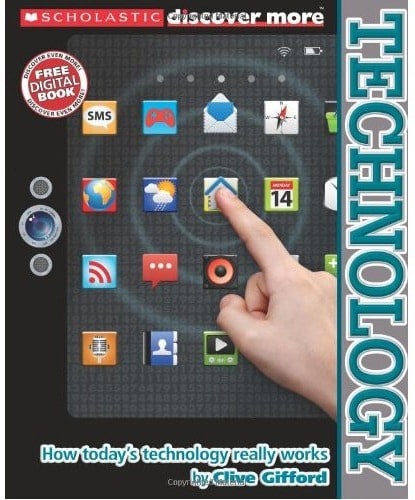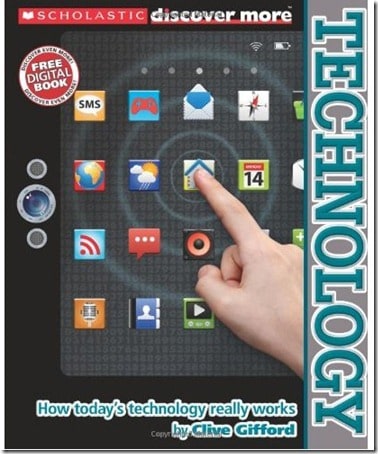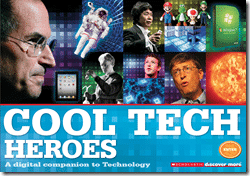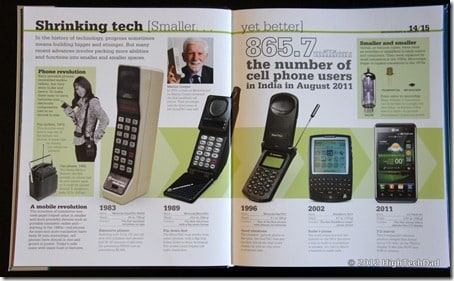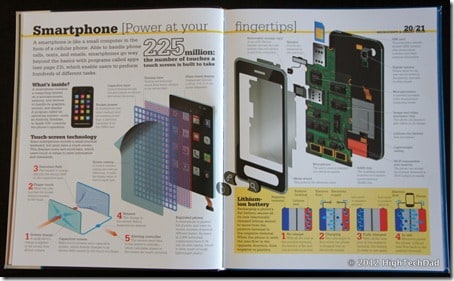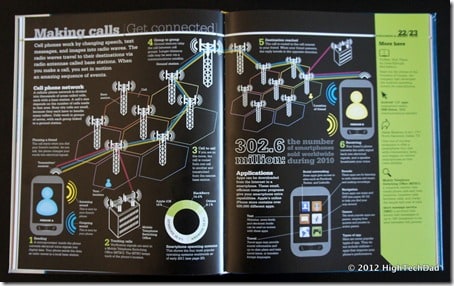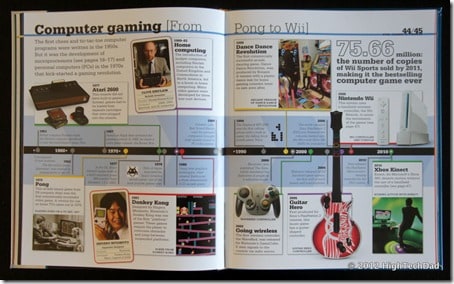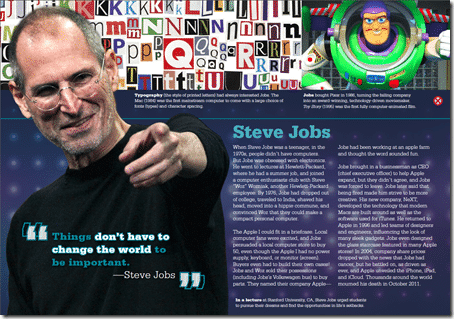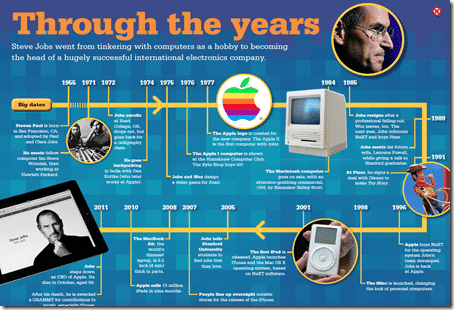I usually write about technology and gadgets. Anything bright and shiny really gets my attention, so much so, that I have little to no time to read books as most of my reading is confined to trade publications and articles. My children, however, especially my youngest daughter seem to LOVE reading, which is exciting. However, I just got my hands on an advanced copy of new book coming out soon by Scholastic as part of a new series called “Scholastic Discover More.” The book that caught my attention in particular was one called “Technology – How today’s technology really works” by Clive Gifford.
Targeted towards the “Expert Reader” (ages 9-13), the “Technology” book actually was one of the first books that I have picked up and “read” in quite a long time. I put “read” in quotes because it is actually more of an advanced picture book than a book of literature. However, that doesn’t mean that it is better or worse in any way. In fact, the book is not only engaging, but it is truly educational. And, as with books about any type of technology, I would have thought that it would be instantly out of date. In fact, it is pretty current and discusses and breaks down the latest technology trends in easy to understand examples (complete with bright and shiny pictures as well). And, to top it off, each book comes with a unique code that allows you to download a digital companion to it.
The structure of the “Technology” book is unique. For starters, it is broken up in to chapters around certain subjects and within each subject are sub-sections. The primary sections (and some of the sub-sections – I did not list all of them) are:
- Microchips & Smart Tech – smartphones, information technology, the Internet, particle colliders, spy tech and robots
- Fun, Games & Thrills – gaming, camcorders, 3D, sounds, and roller coasters
- Force, Speed & Power – engines, cars, extreme speed, rockets and space
- Technology for Life – mountain bikes, sports shoes, solar power and human engineering
Within each sub-section, there are “spreads” of different type. These are double-paged Stand-Alone Spreads which present as much graphical and written information as possible. There are Timeline Spreads which show you a chronology of a particular piece of technology, and most of them ending in 2011 and the tech of that time. There are Look-Inside Spreads which provides “exploded views” of certain types of technology. explain what the individual components do to form the whole. There are also Stats Spreads which are essentially infographics around the particular subject matter. And lastly, there are Photographic Spreads which are simply there to focus on a particular subject and only doing it visually.
So what better way to talk about the book than to write a few interesting statistics down from some of the sections. Here are some items to sink your technology-inquisitive mind into:
- The 1st shoulder-word “mobile” phone was called the Pye and it came out in 1972.
- The Apple 1 computer was introduced in 1976, was sold in a kit form and had 4KB of RAM; in contrast, the Apple MacBook Air was introduced in 2008 and had 1/2 a million times the memory of the Apple 1!
- When charging a Lithium-ion battery, the ions move from the positive terminal to the negative terminal and as the battery is used, those ions move back to the positive terminal.
- A smartphone has more memory and processing power than a personal computer from the 1990s had!
- Monthly Internet traffic in 2015 could fill 20 billion DVDs!
- There were 204 websites in September 1993 – in July 2011 there were over 255,000,000!
- As of September 2011, there were 170 million blogs (and you are reading one now!)
- From 185 miles above the earth, spy satellites can identify an object the size of an orange.
- There are more than 8.37 million industrial and service robots working worldwide.
- Atari introduced the first commercially successful video game in 1972 called Pong.
- Over 500 million copies of Rovio’s Angry Birds have been sold since being released in 2009!
- 3D technology has evolved from stereoscope (1894) to red & blue lenses to polarization and most recently to Lenticular (glasses-free) 3D in 2010.
- The fastest roller coaster is in Abu Dhabi’s Ferrari World theme park which goes from 0-62 mph in 2 seconds!
There are many more little tech tidbits throughout the book – I just cherry-picked a few that were interesting. But if you have a book simple filled with facts or trivia, that would get boring quickly. Instead the Scholastic Discover More series really goes quite a bit deeper than simply providing snippets. The graphical illustrations, large-format photos and clear explanations, timelines and descriptions help to make an child (or adult) for that matter technically savvy enough to actually hold a conversation about the subject.
Here are a few examples of the spreads. Below is the evolution of the smartphone:
This is the “Look Inside” spread for the exploded view of a smartphone which explains how a touchscreen works:
Ever wonder how a cellular phone call works? There is a breakdown of how those calls work through the network:
I found the computer gaming timeline to be interesting as well:
What is also nice is, as I mentioned, is that the digital companion makes the content current. You can learn more about “Cool Tech Heroes,” get additional stories about technology from encyclopedia entries and look up technology words. The formant is similar to the printed book but the eBook focuses on a handful of tech leaders and innovators.
With each technology “hero,” there is an accompanying timeline of their achievements:
While technology is great, know the history behind the technology is even better. Personally, I, as an adult, found this book to be quite informative and helpful for me to explain tech to not only my kids but also my peers. Not everybody has a passion for technology the way that I do, however, this book presents tech in a way that makes it approachable by just about everyone. I wouldn’t, though, give this book to a child under 10 (unless they are really into tech). But it’s a nice reference book to have on your bookshelf should you need to understand how computers work, for example.
HighTechDad Rating
There are other book in this series as well and they are designed for all ages. For emergent readers (ages 3-6), you have: See Me Grow, Farm, Animal Babies and My Body. For those readers between the ages of 7-9, there is: Penguins, Planets, Bugs and Dinosaurs. And lastly, for those older readers (and I would lump adults in here), there is: The Elements, Oceans and Seas, Night Sky and this one, Technology.
“Technology” comes out in May 2012 and will have a retail price of $15.99. You can (pre)order it on Amazon now for about $10.
Overall, I was quite pleased with the “Technology” book and will be reading through some of the others in this series. Yes, me personally, not my kids. I hope that they will have the same enthusiasm as I did for this book.
Disclosure Text : I have a material connection because I received a gift or sample of a product for consideration in preparing to write this content. I was/am not expected to return this item or gift after my review period. All opinions within this article are my own. More information can be found in my About page as well as here.
HTD says: Sometimes the best technology comes in the form of a physical book!
[amazonproduct=0545383730]
